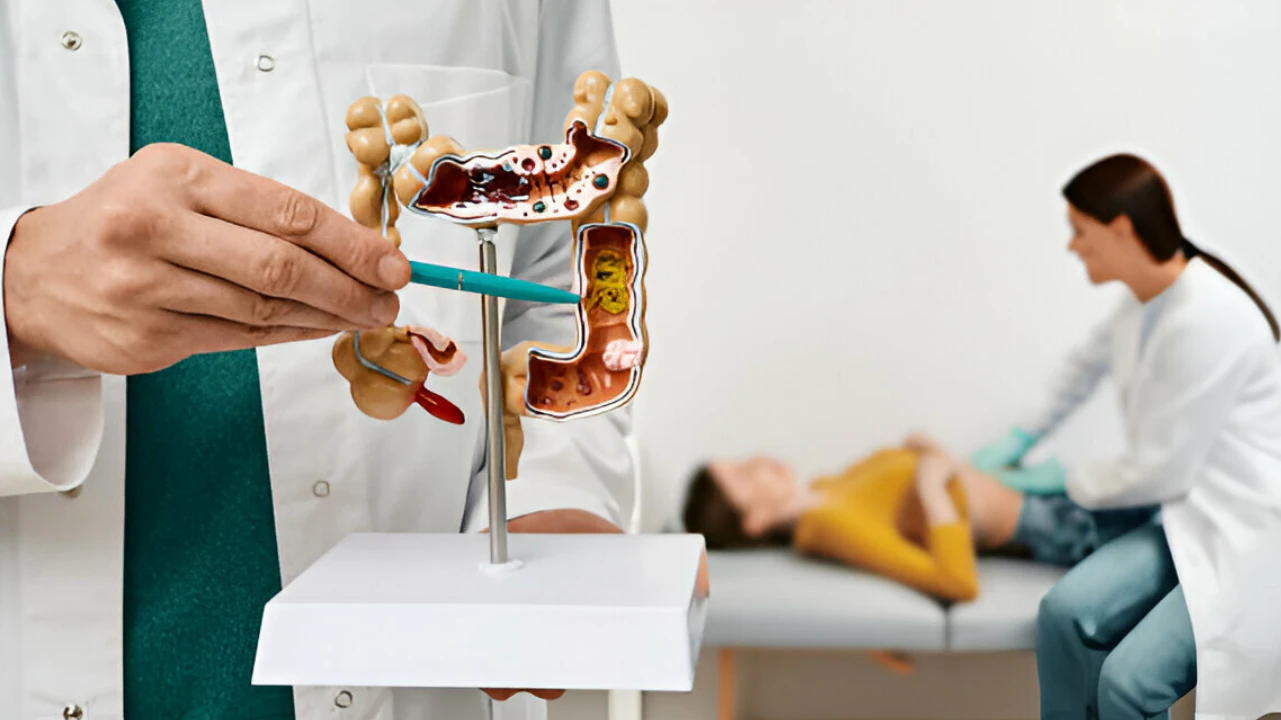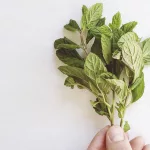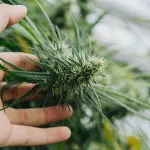Hey there! Have you ever questioned what those little growths to your colon—yep, those referred to as colon polyps—ought to imply to your fitness? Maybe you’ve heard the term tossed around at a physician’s visit or through a friend who’s had a colonoscopy, and now you’re curious. Well, I’m so satisfied you’re here, due to the fact nowadays we’re going to unpack this together—consider it as a pleasant deep dive into some thing that influences so lots of us. And here’s the huge question we’ll address: how does the size of a colon polyp tie into cancer threat? Spoiler alert: it’s a huge deal, however know-how is electricity, and I’m excited to share what I’ve found out with you!
Picture this: your colon is like a protracted, winding lawn hose, and polyps are those tiny bumps that could pop up on the inside. Most of them are harmless—sort of like little weeds that don’t cause hassle—however some, mainly the larger ones, have the capacity to show into some thing more serious, like colon cancer. Don’t let that scare you, even though! The appropriate news is that with the right info and a little proactive care, you could stay on pinnacle of it. So, snatch a cosy seat, and permit’s discover what colon polyps are, why their size topics, and the way you could hold your health in take a look at. Ready? Let’s cross!
What Are Colon Polyps, Anyway?

Okay, first things first—what precisely are we dealing with here? Colon polyps are small growths that shape on the lining of your big intestine, or colon. They’re awesome common—about one in four humans over 50 have them, so if you’ve got one, you’re absolutely now not alone. Most of the time, they don’t motive any fuss—no pain, no symptoms—that’s why they are able to sneak up on you till a medical doctor spots them all through a screening.
Now, now not all polyps are the identical. There are some different types, and some are extra mischievous than others. Here’s the rundown:
- Adenomatous polyps (adenomas): These are the ones to keep an eye on. They make up about two-thirds of all polyps, and while most stay benign, they can turn into cancer if they grow big or stick around too long.
- Hyperplastic polyps: These are the chill ones—usually harmless and rarely a cancer risk. They’re like the friendly neighbors of the polyp world.
So, who’s more likely to get these little visitors? Age is a biggie—polyps love to show up after 50. But different stuff can nudge your hazard up too, like if colon cancer runs in your own family, or in case you’re a smoker, deliver more weight, or consume numerous pork without a whole lot fiber. It’s type of like how neglecting your lawn can let weeds take over—your colon needs a few TLC to stay polyp-free.
Could You Be at Risk?
Let’s make this personal for a sec. Ask yourself:
- Are you over 50? (No shame if you are—age is just a number!)
- Does colon cancer or polyps run in your family?
- Do you smoke or love a juicy burger more than leafy greens?
- Are you carrying a few extra pounds?
If any of these ring proper, it doesn’t imply polyps are knocking at your door, however it is probably really worth speaking to your physician. Think of it like checking the forecast earlier than a picnic—higher secure than sorry, right?
How Are Colon Polyps Classified by Size?
Here’s where it gets interesting: size. When a doctor finds a polyp—usually during a colonoscopy—they whip out their tiny measuring tools (imagine a mini ruler in your colon!) and size it up. Why? Because the bigger the polyp, the more it’s worth watching. Polyps are grouped into four size categories:
- Diminutive: Less than 5 millimeters (mm)—think of a sesame seed or a small pea.
- Small: 5 to 10 mm—like a blueberry or the tip of your pinky.
- Large: Over 10 mm—picture a grape or even a cherry.
- Giant: More than 30 mm—about the size of a walnut or bigger.
During a colonoscopy, they use gadgets like biopsy forceps or a snare to degree and on occasion snip the polyp proper off. It’s quite cool how they could do that each one in a single move, don’t you watched?
Why Size Is a Game-Changer
So, why does size matter so much? It’s all about risk. The tinier the polyp, the less likely it is to cause trouble. Those diminutive ones under 5 mm? They’ve got less than a 1% chance of turning cancerous—practically harmless! But as they grow, the odds shift. Polyps over 10 mm start raising red flags, and those giant ones over 30 mm? They’re the ones doctors really want to tackle pronto.
It’s like looking a seedling in your lawn. A tiny sprout would possibly in no way quantity to a lot, however allow it grow right into a huge bush, and it can take over. That’s why size is such a key clue for medical doctors—it helps them decide what to do next.
The Link Between Polyp Size and Cancer Risk
Alright, permit’s dig into the coronary heart of it: how does colon polyp length tie into cancer threat? The brief answer? The bigger the polyp, the bigger the hazard. But permit’s smash it down so it’s crystal clear:
- Under 5 mm: Super low risk—less than 1%. These little guys are usually left alone or just watched.
- 5-10 mm: Low to moderate risk—maybe 1-5%. Doctors might snip them out to play it safe.
- Over 10 mm: Higher risk—up to 10-15% if they’re over 20 mm. These are almost always removed.
- Over 30 mm: Significantly higher risk—sometimes up to 30%. These need serious attention.
But size isn’t the whole story. The type of polyp plays a role too. Those adenomatous ones we mentioned? They’re the troublemakers, especially when they get big. Hyperplastic polyps, though? They’re usually fine, even at larger sizes.
What Makes Bigger Polyps Riskier?
Ever wonder why size ups the ante? As a polyp grows, its cells can begin to exchange—form of like how dough rises and transforms in the oven. Over time, those modifications can lead to atypical cells, and if left unchecked, the ones cells may grow to be cancer. It’s a slow process, which is why catching them early is such a win.
Here’s a stat to chew on: according to the Cleveland Clinic, polyps over 10 mm have a 10-15% chance of already containing cancer cells, while those under 5 mm are under 1%. That’s a huge jump, right?
A Handy Polyp Size Chart
Let’s make this visual with a quick table—think of it as your polyp cheat sheet:
| Size Category | Size Range | Cancer Risk |
|---|---|---|
| Diminutive | <5 mm | Very low (<1%) |
| Small | 5-10 mm | Low to moderate (1-5%) |
| Large | >10 mm | Higher (10-15% for >20 mm) |
| Giant | >30 mm | Significantly higher (up to 30%) |
Pretty straightforward, huh? This little chart can help you see why doctors get serious about those bigger polyps.
Beyond Size: Other Cancer Risk Factors

Okay, size is a big deal, but it’s not the only thing that can tip the scales. Here are a few other factors that might influence whether a polyp turns into cancer:
- How many polyps you have: One polyp is one thing, but a bunch of them? That’s like having a yard full of weeds—more to manage, higher risk.
- What they’re made of (histology): If a polyp has abnormal cells (called dysplasia), it’s more likely to go rogue, especially if it’s an adenoma.
- Your genes: A family history of colon cancer or conditions like Lynch syndrome can bump up your risk, no matter the polyp size.
It’s like a puzzle—size is a major piece, but these other factors help complete the picture. That’s why your doctor looks at everything together.
Good to Know: Not All Big Polyps Are Bad
Here’s a bit reassurance: now not every large polyp is cancerous, and not every small one is safe. It’s like judging a canine through its bark—size gives you a touch, but you’ve were given to check below the hood. That’s why docs regularly put off polyps and check them in a lab. It’s the surefire way to understand what’s up.
Finding and Handling Colon Polyps
So, how do you even know if you’ve got polyps? The MVP here is the colonoscopy. It’s this extremely good process wherein a health practitioner uses a tiny camera to peek inner your colon. If they spot a polyp, they can regularly pluck it out right then—like pruning a plant at the same time as you’re at it. Cool, huh?
There are other ways to screen too, like:
- Stool tests: These check for blood or weird DNA in your poop that might hint at polyps or cancer.
- CT colonography: A fancy X-ray that gives a virtual tour of your colon.
But honestly, the colonoscopy is the champ—it finds polyps and deals with them in one swoop.
What If They Find Something?
If a polyp pops up, don’t freak out. Most are benign, and removing them is no biggie. The doctor might snip it during the colonoscopy or plan a follow-up if it’s tricky. Afterward, they send it off to a lab to check for anything funky.
After that, you might need to check in more often. Had a big polyp or a few of them? Your next colonoscopy might be in 3 years instead of 10. It’s like setting a reminder to keep your garden tidy.
Why Early Detection Rocks
Here’s the best part: catching polyps early can stop cancer in its tracks. Studies—like ones from the Mayo Clinic—say regular colonoscopies can cut your colon cancer death risk by up to 60%. That’s like having a secret weapon against cancer!
I’ve got a story for you: my uncle was dreading his colonoscopy a few years back. He grumbled about the prep, but they found a large polyp that could’ve turned nasty. They removed it, and now he’s all smiles. It’s a reminder that a little discomfort can lead to a lot of relief.
How to Keep Your Colon Happy

Want to lower your polyp risk? Screening’s your first step. The American Cancer Society says start at 45 if you’re average risk—earlier if cancer’s in your family. But you can do more every day to help your colon thrive:
- Eat smart: Load up on veggies, fruits, and whole grains—like painting your plate with all the colors of the rainbow.
- Move it: A brisk walk or some yoga can keep your colon in good spirits.
- Ditch the smokes: Quitting is a gift to your whole body, colon included.
- Ease up on booze: A little wine’s fine, but don’t overdo it.
These aren’t just colon hacks—they’re life hacks. You’ll feel better all around!
What’s a Colonoscopy Like?
First time getting one? I get it—it sounds intimidating. But it’s not so bad. You’ll be sedated, so it’s like a mini nap. The prep’s the tough part—drinking that cleansing drink isn’t a party—but it’s over quick. Afterward, you might feel gassy (totally normal!), and you’ll need a ride home. Then, if all’s clear, you’re good for up to 10 years. Worth it for that peace of mind, right?
Wrapping It Up: You’ve Got This!
So, there you have it—your pleasant guide to colon polyp length and cancer hazard. Bigger polyps do imply better danger, but right here’s the intense aspect: with ordinary check-ups, you can seize them earlier than they change into trouble. It’s like keeping an eye in your car’s oil—routine care maintains things walking easily.
I hope this chat has left you feeling knowledgeable and empowered, not involved. Your colon fitness is for your hands, and small steps—like ingesting nicely, staying energetic, and getting screened—can make a massive difference. If you’re ever unsure, simply talk in your health practitioner—they’re your teammate in this.
What do you think? Have you had a colonoscopy, or are you gearing up for one? Drop a comment underneath—I’d like to pay attention your story! And if this helped you, percentage it with a pal. Here’s to satisfied, healthy colons for everyone!


















Leave a Reply
You must be logged in to post a comment.